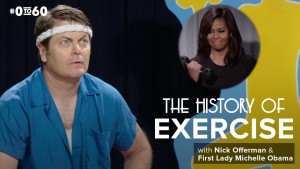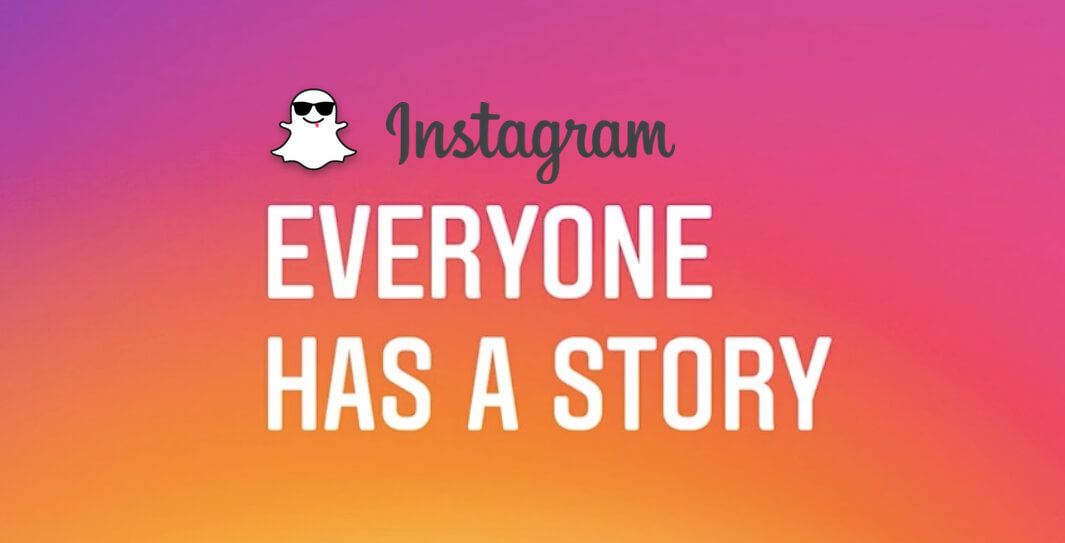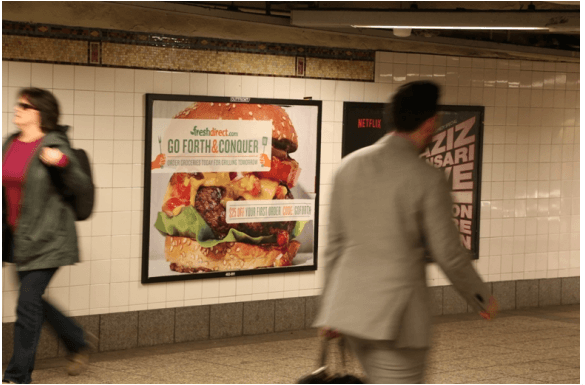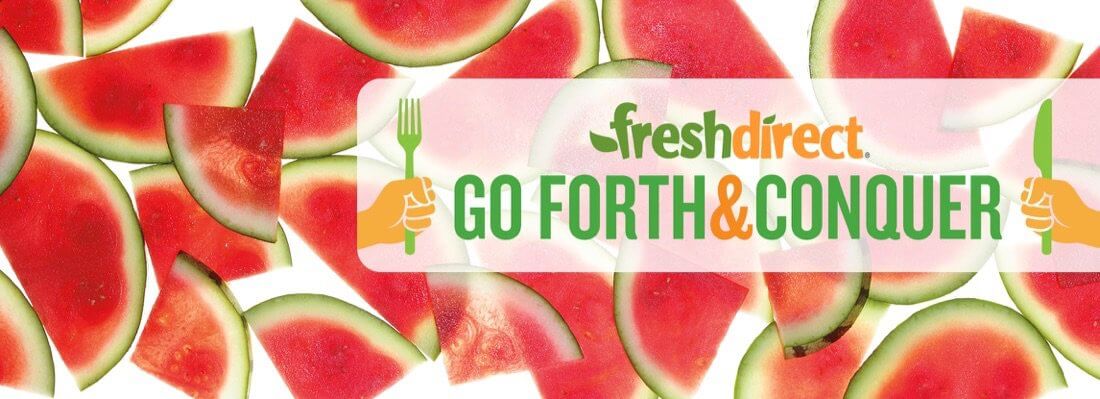Sep21Observations

Every year, in the window between Apple’s iPhone event and the day customers can actually buy one, tech press are given access to new devices early– as long as they agree to hold their reviews until a specific time of Apple’s choosing. Apple’s embargo strategy has a history of being choreographed to ensure exposure in the publication it feels is most important on launch day. A discussion on last week’s CTRL-WALT-DELETE podcast between tech journalists Nilay Patel and Walt Mossberg of The Verge and Recode revealed how those priorities have shifted over the years. Read More
Top
Today, in celebration of the 60th anniversary of the President’s Council on Fitness, Sports, & Nutrition (PCFSN), we launched the “History of Exercise” with Funny or Die.
TopAug18News
BFF Trump in Your Face!
At SS+K we work across many types of brands, but once every four years we get to tap into our political roots and take part in the election, and what an election year this is! When our right to choose what we do with our bodies, who we marry, how we’re seen in the world and so much more is at stake, we had to do something.
Read More
Inspired by three of our favorite things — history, the downtown area we call home, and our new obsession with Pokemon gaming, we decided to build a PokemonGo powered walking tour of our ‘hood. So Grab a bite to eat at some of our local haunts, catch some Pokemon and discover some history!
Read More
Aug04Observations
Round Table on Instagram Stories

There’s been a lot of buzz in the last week about the new Instagram Stories feature. So, what’s the verdict? Is Instagram stealing SnapChat’s story culture thunder? And will they be successful?
We asked three of our senior digital strategists/ social media junkies to weigh in. Here’s what they had to say:
Matt Chisholm (Senior Digital Strategist and Pokemon Karate Kid):
Facebook tried copying this before, now they’re doing it again with Instagram. Some of the older millennials who use Instagram but not SnapChat may use it, but I think anyone who is already using SnapChat will stick with it as the behavior has already been set along with all the effort of building followers and great accounts to follow. Implications for brands? Negligible.
Claudia Cukrov (Senior Digital Strategist and Resident Snap Story Queen):
Platforms need to know what they do well and own it. Instagram has gone through many evolutions since the acquisition – video, sponsored content and the “videos you may like” curated feed, but essentially it remains a space we build our personal [filter fantasy] culture online. SnapChat has made us question if content needs to live forever and has undoubtedly had a major impact on Instagram’s usage numbers. Time will obviously tell how effective Instagram Stories is at meeting their audience’s evolving digital attitudes, but Instagram should really be asking themselves why they need a seat at the table of temporary, raw and [largely] unfiltered messaging, when they’ve built an empire on the filter fantasy reality. On the plus side, IG Stories allows you to see anyone who’s looked at your story–followers or non-followers. Bad news for crazy ex-cyber stalkers!
Kevin Skobac (SVP, Digital Strategy + Innovation and Avid Facebook Poker):
Instagram has been losing ground in the attention game to Snapchat, so they had to try something sooner than later. On one hand, their implementation of “stories” is more refined and usable than Snapchat (but so was Facebook’s “Poke” app a few years ago). Furthermore, their ability to draft off people’s existing extensive Instagram friends lists means their usage will, at least at first, go from 0 to 60 in no time. On the other hand, it feels uncomfortably forced in the Instagram app– with a whole separate create and browse experience, each of which feels like it’s supporting separate habits and mindsets. Comparatively, the way Snapchat has slowly added features and integrated new capabilities into one cohesive experience has been a work of art, each new element improving what came before it. And, in general, the role of ephemeral feels a lot more closely tied to the mentality and use cases of messaging, than of a curated gallery product like Instagram. So I’d expect the use of Instagram Stories to die down significantly after the initial hype, like every shiny object before it, and for Snapchat to continue its phenomenal growth. Ultimately each platform will have their audiences, and brands will have to decide which communities they want to invest in engaging, and where they can provide value.
We’re happy to announce the launch of four TV PSAs for the NCAA. They go live tonight during March Madness:
The PSAs remind us of what’s most important about being a student-athlete: defining your own version of success through a college education.
“Shaquille O’Neal” and “Billie Jean King” feature these two iconic athletes, who found their own path to success and are now watching the next generation work toward theirs. In both cases, sports have allowed these two legends to accomplish so much outside of the game. “Courts” and “Fields,” the other two spots, feature quotes and speeches from legendary basketball coach John Wooden and Olympic hockey coach Herb Brooks.
TopWe dropped by the recent 2015 Social Good Summit to hear some incredible people speak about how technology and new media are driving socially good initiatives around the world. Climate change, female education, data equality and humanitarian aid – particularly around the refugee crisis – drove a great deal of the conversation.
More
Notable speakers included former U.S. Secretary of State, Madeleine K. Albright on the future of humanitarian aid, Morgan Spurlock shared some knowledge about how to use content to reach audiences and Executive Director of Greenpeace International, Kuma Naidoo on climate change and the struggle for justice.
Then there was eleven-year-old Vivienne Har, who at the age of eight raised $100K to fight child slavery with a lemonade stand and has since launched a social network for charitable giving.
Key takeaways from the Summit:
Gender equality requires data equality.
There were a number of conversations about how to best use data to solve problems, but more prevalent was the issue that largely, we’re not collecting the right data to even understand the issues at hand.
Laverne Cox lead a discussion around data equality and the lack of data on the transgendered community. The U.S Census Bureau survey currently doesn’t offer any questions that identify transgendered individuals, and this is largely a global issue.
Shelby Chestnut of the NYC Anti-Violence Project noted that without data capturing crime rates, suicides or career and housing-related acts of discrimination on the transgendered community, we can’t truly understand the issues they’re facing or create better programs to support their needs.
Emily Courey-Pryor, Senior Director of Data2X , also advocated for better data collection methods to drive gender equality and female empowerment. She noted that the great majority of surveys target “heads of the household”, denying the female perspective on a large range of issues. “The data revolution needs to ensure that everyone is counted. There has to be data equality if you want gender equality.”
Content and context are key to mobilizing the masses towards action.
Documentary filmmaker Morgan Spurlock showed a short film about one school kid’s mission to better detect pancreatic cancer. While the media often covers the negative aspects of crisis’, Spurlock believes content is the best asset at driving hope-instilled awareness to the global community, “We live in a world of competing sorrows – people can’t be involved in all of it. We need to tell the story about why this cause matters.”
When pressed about whether short-form content dilutes the complexity or gravity of a cause, Spurlock argued that breaking down issues into bite-size vignettes is far more accessible to the masses.
Raising awareness through great content is only the beginning of the process, just how do we engage people to get off the couch and take action? Spurlock believes content’s true value is the ability to emotionally connect viewers to a perspective that hadn’t previously considered, “If you can get someone to walk in another’s shoes, you will get them to act. Empathy. That’s where it all starts.”
Priscilla Natkins, EVP of The Advertising Council, echoed Spurlock’s views on empathy-driving content, but also noted the huge opportunity of social platform-first initiatives that offer external validation to those who participate, like that seen in the Ice Bucket Challenge.
“Slacktivism” isn’t as slack as we thought.
An ongoing discussion point at SS+K is the idea of “slacktivism” – a common ask by many issue and political-driven causes, where users are urged to “sign a petition” or “tweet a hashtag” to show their support. While many traditional activists see this ask as a passive solution that doesn’t truly solve the problem at hand, in recent months the power of digital and social platforms to mobilize a group towards driving awareness has seen positive change, globally.
Executive Director of Greenpeace International, Kuma Naidoo spoke about Greenpeace’s recent success forcing multinational oil and gas company, Shell out of a proposed plan to drill for oil in the Arctic seas. Shell claims the up-front investment in the venture wasn’t worth the potential return. However, Naidoo argued the efforts of over seven-million people who signed the petition and countless others who took to their social channels under #SaveTheArctic campaign were instrumental in raising public awareness and pressure on the energy giant.
David Miliband, President and CEO of the International Rescue Committee, noted that while the Pope thinks we’re facing a ‘globalization of indifference’, in an increasingly interconnected world, we’re more aware than ever of the local and global issues we face. “One person alone can’t do much, but now we have the ability to mobilize as a group and get things changed.”
Political change > donations.
While many cause-driven groups focus on leveraging their audiences to drive awareness or donations, Sienna Miller, actress and Global Ambassador for the International Media Corps argued the focus should really be around driving advocacy for political solutions.
South-Korean Diplomat Kyung-wha Kang noted the positive impact political change have had on China’s citizens, “In the last fifteen-years hundreds of people have come out of poverty in China due to economic growth.”
While it was evident from many speakers at the Social Good Summit that political action was the end goal, how exactly cause-driven brands translate empathy and audience action into real political change is yet to be solved. It’s a complex issue, and something we hope will be a chief focus at the next event.
Less
We are thrilled about the terrific coverage by CNN today of Moving Through Glass, one of our SS+K Labs projects.
Moving Through Glass is the first-ever augmented reality application providing round-the-clock aid for people living with Parkinson’s. We have been working closely with Mark Morris Dance Group / Dance for PD® on the project for the last year. It is now making its way into the hands of researchers at Weil-Cornell Medical University and Stanford University, and will be available to students at Dance for PD’s flagship studio in Brooklyn.
We look forward to having more to share about Moving Through Glass in the weeks to come.
TopWe are excited to launch our latest work for FreshDirect just in time for all those glorious eating occasions that come along with summer. The campaign, “Go Forth and Conquer,” is about all the endless ways you can use FreshDirect to make your life easier, happier and tastier.
More
It’ll make you want to Go Forth and Munch. Or Go Forth and Spoon. Or Go Forth and Mash. Slice. Dice. Scoop. Slurp. Nibble. Dip.
You can already spot some of our work in NYC subways, and there’s a lot more to come – from digital homepage takeovers, to what shows up inside your FreshDirect delivery box.
Here’s some of what you’ll be seeing this summer. All the delectable food imagery that’s featured comes from Johnny Miller and team.



Less
When you dig into it, there are a lot of really quirky financial terms. Coackroach Theory, Dead Cat Bounce, Bear Hug, Stalking Horse Bid… phrases we’re all surprised to learn have deeper meaning.
To help educate people about the crazy but useful financial terms we created Fun With Finance, a series of fun animated videos for E*TRADE that can be discovered and shared on social media.
Read more on Creativity
Watch more at E*TRADE




